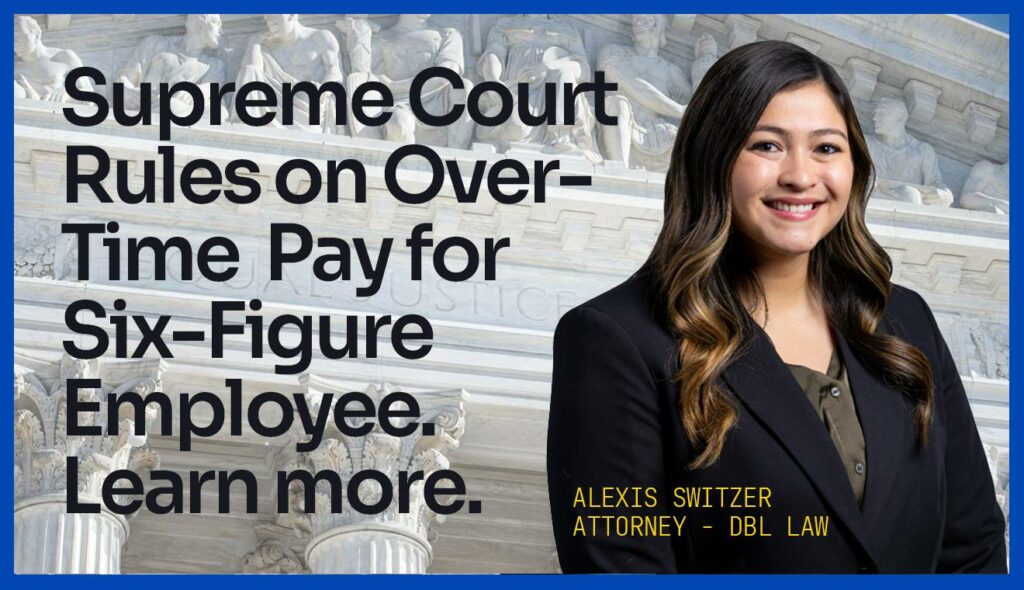
The United States Supreme Court published its ruling today in an overtime case involving a highly paid employee. In Helix Energy Solutions Group v. Hewitt, the employee worked as a tool-pusher on an offshore oil rig. Hewitt typically worked 12 hours a day, seven days a week, and was paid on a daily-rate basis with no overtime compensation. Hewitt’s daily rate ranged, over the course of his employment, from $963 to $1,341 per day. Hewitt’s biweekly paycheck amounted to his daily rate times the number of days he had worked in the pay period, i.e., if Hewitt worked only one day, his paycheck would total $963; but if he had worked all 14 days, his paycheck would total around $13,482 – resulting in approximately over $200,000 annually. At issue before the Supreme Court was whether Hewitt was entitled to overtime compensation or exempted under the federal statute.
The Fair Labor Standards Act of 1938 (FLSA) requires that covered employees receive overtime pay when they work more than 40 hours a week. There are numerous exemptions to overtime including highly compensated employees (over $100,000 annually) or the white collar exemptions. The three white collar exemptions are executive, administrative, or professional capacity. The white collar exemptions also require that the employee is paid a guaranteed salary not subject to deduction for quality or quantity of work.
At issue in the case before the Supreme Court was whether Hewitt qualified as a bona fide executive under the rule applying to employees making at least $100,000 in total annual compensation. The rule, referred to as the HCE rule, is as follows: An employee must regularly perform just one of the following responsibilities: managing the enterprise, directing other employees, and exercising power to hire and fire (duties test). The employee must be compensated on a salary basis (salary-basis test) at a rate of not less than $684 per week (salary-level test).
The salary-basis test requires that an employee be paid each pay period on a weekly, or less frequent basis, a predetermined amount, without regard to the number of days or hours worked. 29 CFR § 541.602(a). Or, the employee’s compensation can be computed on an hourly, daily or a shift basis, so long as (1) the employee is guaranteed $684 each week regardless of the number of hours, days or shifts worked; and (2) the promised amount is roughly equivalent to the employee’s usual earnings at the assigned hourly, daily or shift rate for the employee’s normally scheduled workweek. 29 CFR § 541.604(b).
Clearly, Hewitt’s pay scheme did not fall under the ambit of §541.602(a), because Hewitt was paid according to a daily rate and not a guaranteed salary. Additionally, Hewitt’s pay scheme did not satisfy the requirements of §541.604(b), because he was not guaranteed at least $684each week, regardless of the number of hours, days or shifts he worked. Therefore, the Supreme Court determined that Hewitt’s pay scheme did not satisfy either of the salary-basis tests, and thus, Hewitt was entitled to overtime compensation. The full text of the U.S. Supreme Court’s opinion can be found here.




